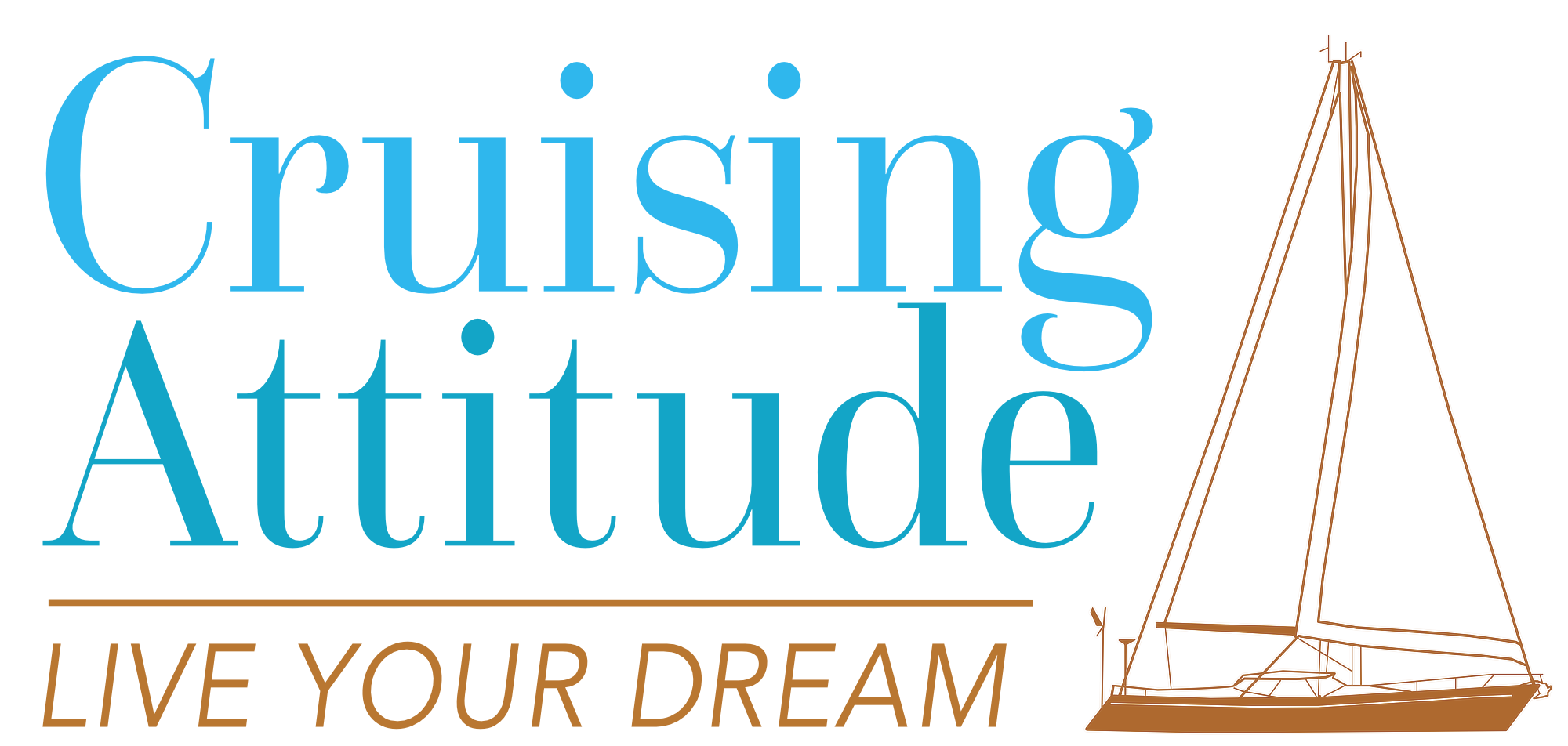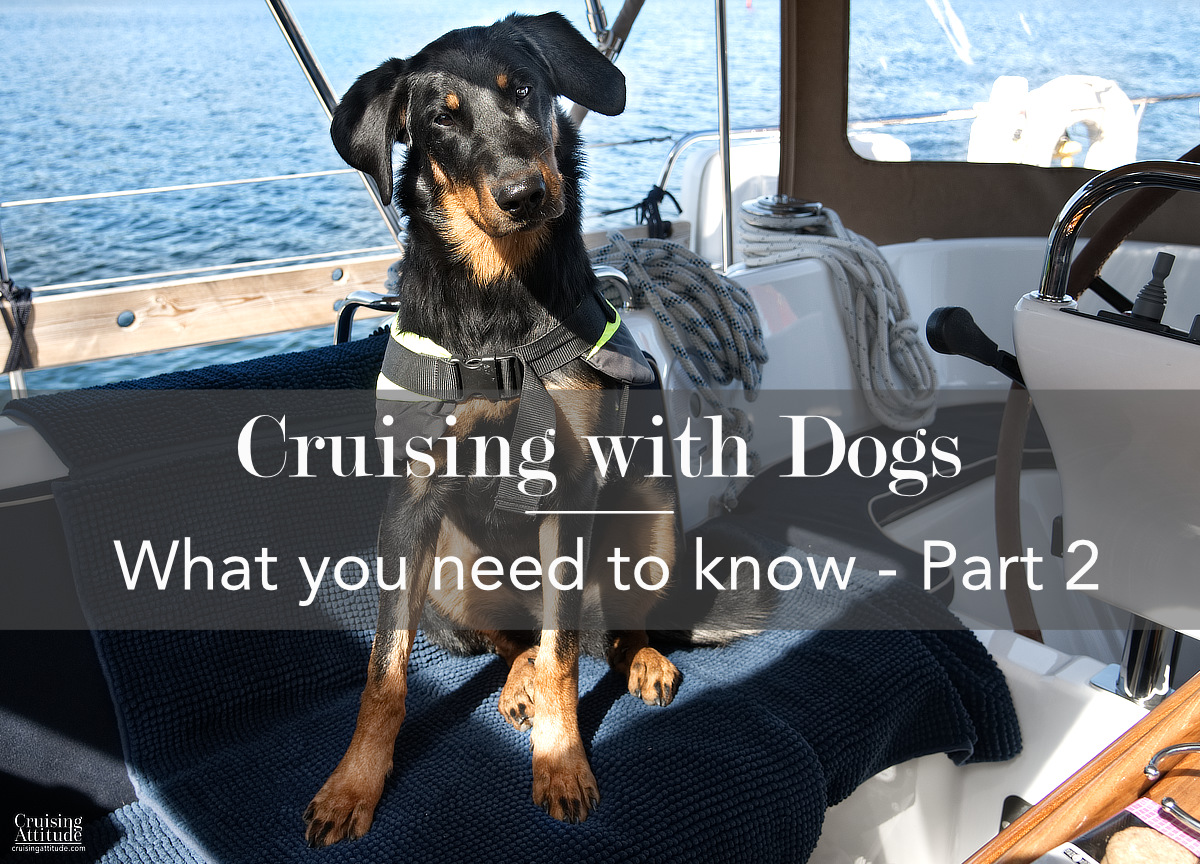
8. Teach your dog to swim well
We taught Mika to swim with confidence buy starting her off wearing her life vest. The very first time she started by pawing the water instead of really swimming, but the second time around, she understood that she should keep her paws under water. By the fourth time, she was really confident swimming with the life vest.
Next, we put here in the water wearing just her normal harness. No problem. She had the confidence to swim and did it well. By the 10th time, she was jumping off the dingy on command and swimming alongside. It’s great exercise as she can swim quite a long distance and it’s exercise she loves even if it’s raining. We always stick close to shore so that she can get out when she’s tired. When we’re near a shore that’s difficult to access from the water (big stones or lots of slippery seaweed) we lift her out into the dingy by her harness.
Warning: You may have a dog that smells bad when wet.
One of the things we appreciate about Beaucerons is that they dry very quickly — usually within a half hour and that they don’t stink, even when wet (honestly)! Their fur does not absorb water like our hair or like many other breeds. We had a Golden Retriever, a German Shepard and a Flat-coated Retriever, and they all had the infamous “wet dog odour”. The two Retriever types also took forever to dry. We sometimes had to use a blow dryer with Freja, our Golden ( she hated it)!
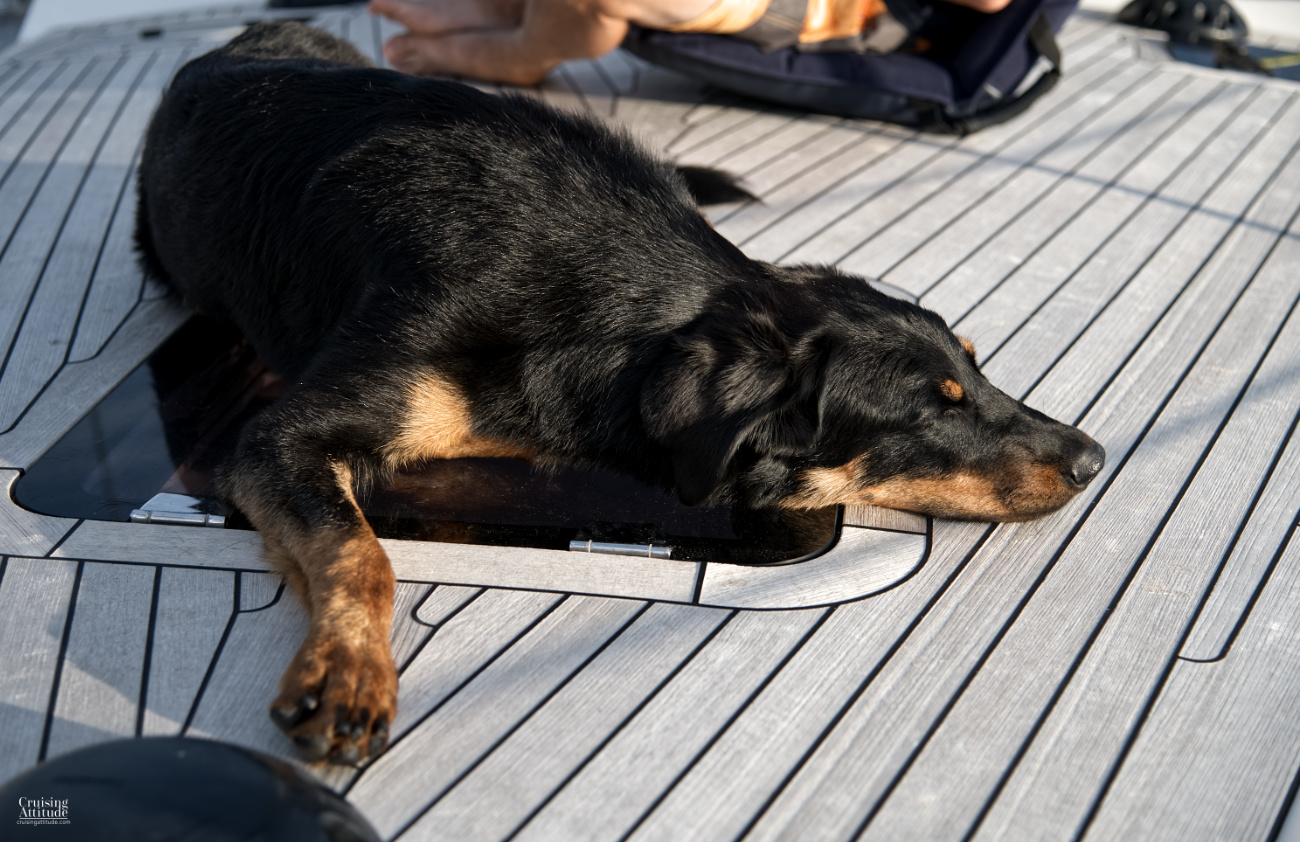
Mika having an after-swim siesta.
9. Get your dog prepared for travel – he/she needs a pet passport and a microchip
If you’re from Europe, your dog probably has these already, but I’ve read that it’s not required in many other countries. In Europe you will be asked for your dog’s passport and customs officials will read off its microchip when you enter the country. They will also check that your dog has the required vacinations and that they’ve been administered recently enough.
Some countries also require special de-worming treatments (Finland and Norway, for example) that must be administered by a vet between 24 hours and 5 days before entering the country. Your dog’s passport must be filled out and stamped by a vet – you can’t do it yourself. It’s a good idea to have proof that you’ve entered the country during the 24-120 hour window. We stay at a marina so we have the fee receipt with the date on it. Or you could go to the customs office.
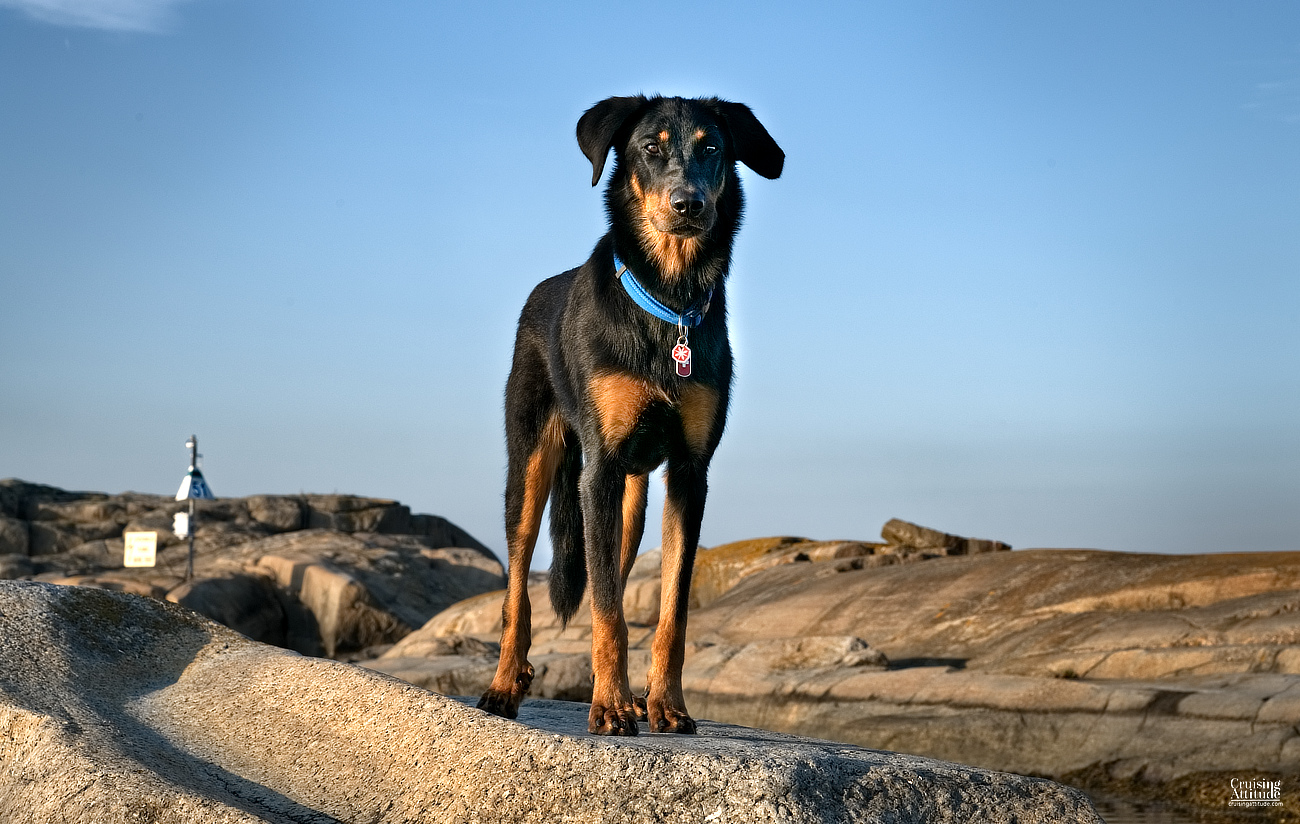
Mika at Verdens Ende (Land’s End) Norway
When I phoned Norwegian Customs the first time we sailed there, they told us we didn’t need to visit customs for the dog, but that we needed to always have the dog’s passport with us in case of a police or customs check. (Since we are a Schengen country boat and we are Schengen country citizens, we did not have to go to customs to clear into Norway). We were , however, checked by a “roving” customs boat at the Verdens Ende Marina and they asked for Mika’s passport to see if we had the Vet’s stamp and date for the worm treatment.
10. Have a Safety and “DOB” (dog overboard) plan
When the seas are rough, Mika will have her flotation vest on and always be attached to a U-bolt via a soft shackle in the cockpit. In calm conditions she will have either her flotation vest or, if the weather is hot, her harness. When we are at anchor, she no longer needs a harness since she swims like a seal now. She is always attached in the cockpit when we are doing harbour or anchoring manoeuvres, since we are both too concentrated on properly mooring the boat to keep an eye on her.
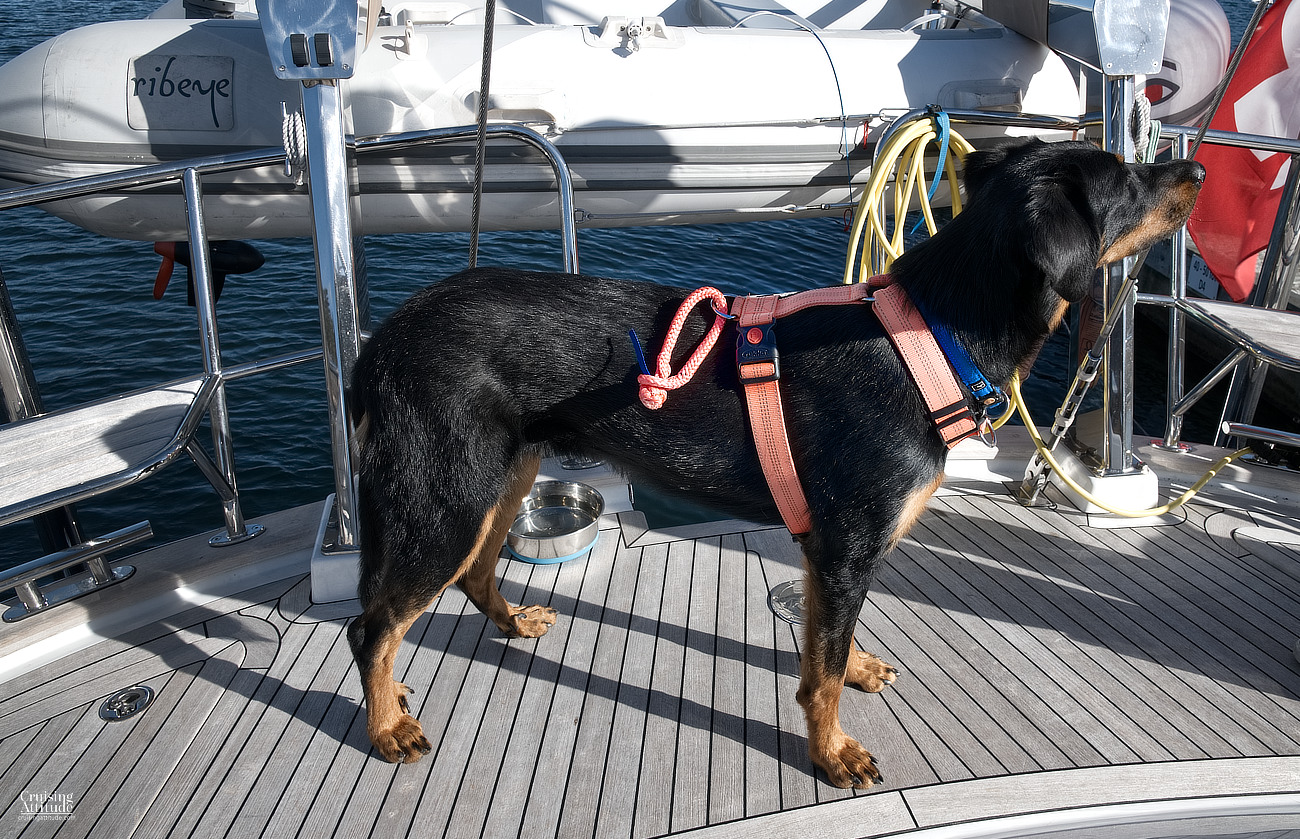
Mika with her harness and soft shackle.
We had Discovery Yachts install four lines of life lines around the boat instead of the usual two. The space between the lines is too narrow for a large dog to slip through them (and neither can we, as a bonus). Some people use netting and some weave a line in a zig-zig pattern through the lifelines.
Our DOB plan is this: we will use our buoy hook (about 1.3 meters long) attached with a soft shackle to our spinnaker halyard. We can hook the large soft shackle on her harness ring to get her back onboard. If the seas are rough though, she is always attached inside our protected cockpit with a 1-meter line so there’s no risk of her going overboard.

The buoy hook can easily snatch the soft shackle and then locks shut.
11. Teach your dog to be alone on the boat
You’ve probably taught your dog how to stay alone at home? Our dogs have had to stay on the boat alone while we go grocery shopping, visit a museum or go to a restaurant that doesn’t allow dogs.
Here’s how we taught Mika. When she was just 10 weeks old, we started playing “find the dog treat”. We would place about 10 pieces of her usual dog food around the apartment while she waited (“wait” is a command she learned early along with sit and lie down). It would take her around 5 minutes to find the treats. Then we started hiding the treats and then saying “OK, find the treats” and then leave the apartment for a few minutes. This became longer and longer — 5 minutes, then 10 and 15 minutes. We always came back to find her lying in her dog bed not perturbed at all. Nose work tires her out!
So, when we need to leave her in the boat, we first take a long walk, have her swim for awhile, or go to a dog park if there’s one available. That way, she’s already tired. Then we hide about 25 tiny dog treats (we use normal grain-free dog food for small breeds as treats) all over the boat while she waits. Just before closing the companionway door, we say “find the treats” ! We always come back to the boat and find her lying down on her rug, a bit drowsy, and just as calm as can be.
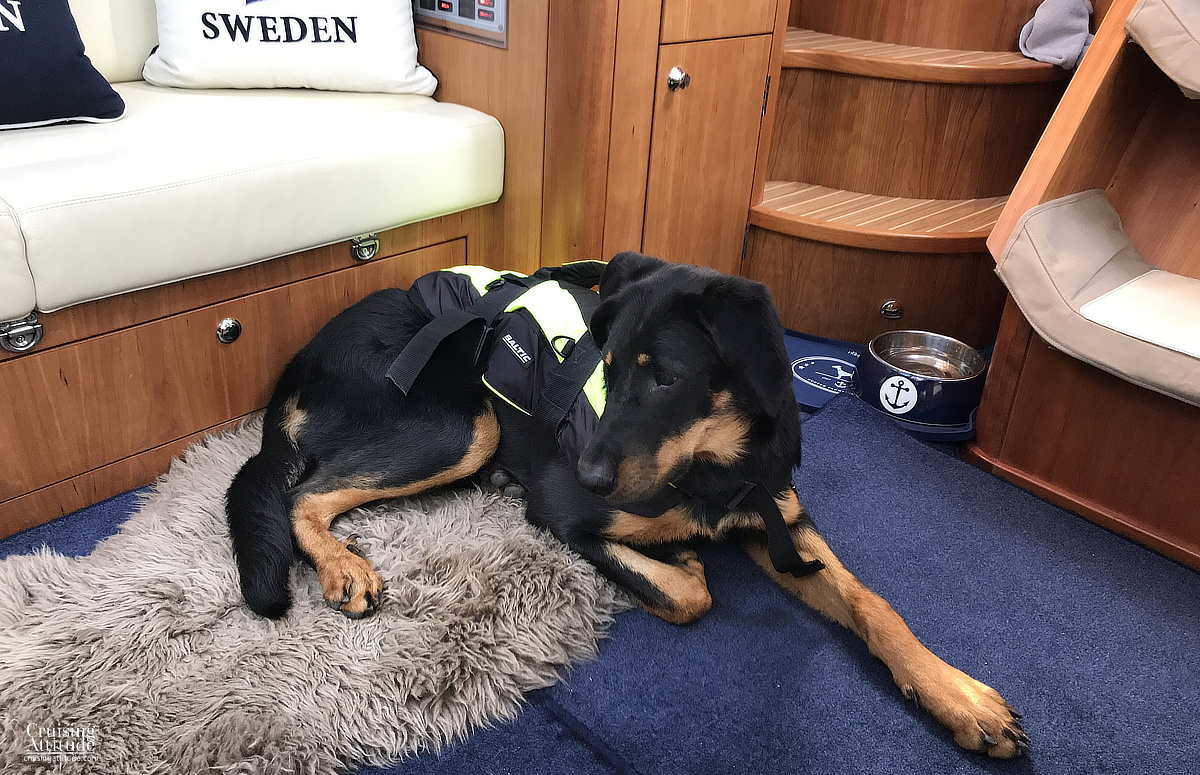
Mika loves her sheepskin rug (an IKEA purchase). The nautical water bowl is from Hunter.
If the day is sunny and the temperature is over 22°C inside the boat, we turn on the saloon air conditioning and set it to 20 °C for Mika. We also close all of the sun blinds inside the boat. When it’s extremely hot, we attach the big canvas covers for the big saloon windows on the exterior side to keep the sun from hitting them as they can become hot (they are tinted black).
12. Ask yourself “Does my dog actually like being on a boat?”
We’ve been lucky. Both Senna and Mika adapted well to life on a boat. Mika usually sleeps like a log while we’re under way. The only times she hasn’t slept were when we had rough conditions closed-hauled or on a close reach with waves on the beam. That’s when we know she’s not entirely happy. That’s why we try to adapt our sailing to keep Mika confortable.

Mika usually sleeps during the entire voyage, with a break for a few treats at lunchtime.
Neither dog got seasick or stir crazy. Training them while they’re still very young is your best bet for having a perfect boat dog, but then Senna, who came onboard as an “old lady”, adapted beautifully.
You may have to change your habits (for example, always stopping at night so your dog can get some exercise on land if you have a breed that needs it, or staying in the marina or at your protected anchorage if conditions are rough, even if you’re racer types that love that kind of challenge).
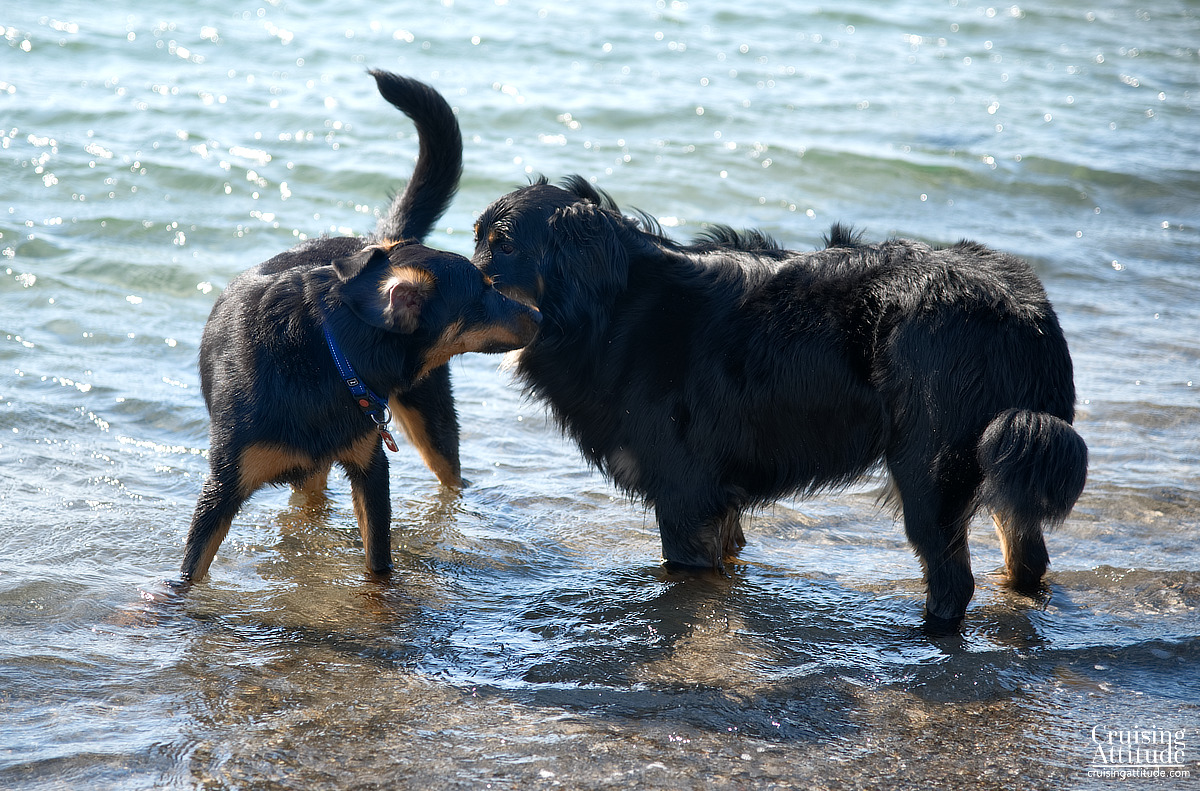
Mika easily makes friends with all animals!
If you are thinking of adopting a dog for your cruising life, you should think about choosing a calm, sociable, friendly breed rather than a nervous, high-strung, barky one. You and your boat neighbours in anchorages and marinas will be glad you did.
Good luck!
